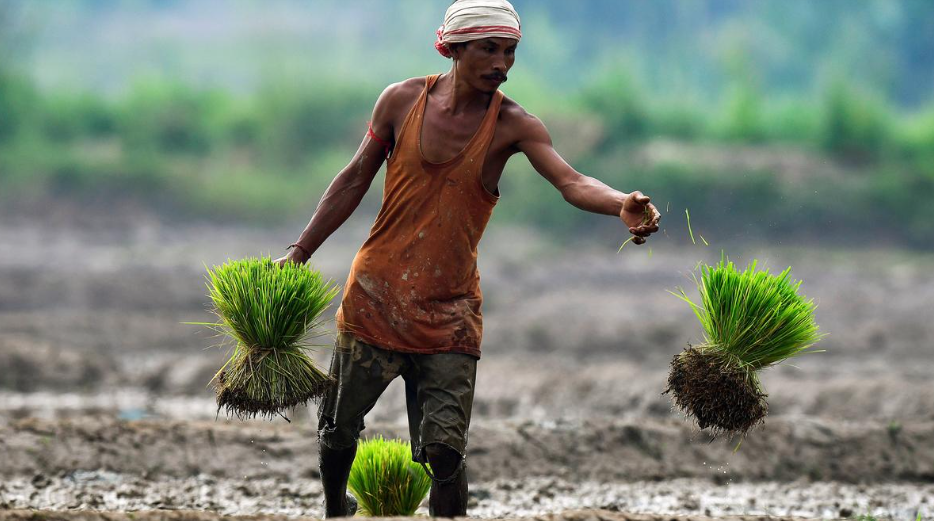The Road to 2047 for Indian Agriculture (GS Paper 3, Agriculture)

Introduction
- As India approaches its centennial of independence in 2047, the nation faces the ambitious goal of becoming a developed country.
- Achieving this vision necessitates a significant transformation across various sectors, with agriculture playing a crucial role.
- To elevate per capita Gross National Income (GNI) sixfold, a comprehensive development strategy, especially in agriculture, is imperative.
Road to Sustainable Agriculture
A key to transforming Indian agriculture lies in adopting sustainable practices that ensure long-term productivity while preserving environmental health. Notable advancements include:
- Precision Farming: Leveraging technology to optimize inputs and enhance crop yields.
- Genetically Modified Crops: Developing crop varieties that are more resistant to pests, diseases, and environmental stresses.
- Advanced Irrigation Techniques: Implementing drip and sprinkler systems to improve water use efficiency. The Pradhan Mantri Krishi Sinchayee Yojana (PMKSY), with its allocation of ₹93,068 crore for 2021-26, aims to enhance water management by covering 78 lakh hectares with micro-irrigation systems.
Challenges and Solutions
Indian agriculture faces several significant challenges:
- Climate Change: Erratic weather patterns and increasing temperatures impact crop yields.
- Land Degradation: Soil erosion and depletion reduce agricultural productivity.
- Market Access Issues: Farmers often struggle to access markets and receive fair prices for their produce.
Key Initiatives to Address These Challenges
- Pradhan Mantri Fasal Bima Yojana (PMFBY): Introduced in 2016, this scheme provides financial assistance for crop losses. With 49.5 crore farmers enrolled and claims exceeding ₹1.45 lakh crore, PMFBY is crucial for managing agricultural risks.
- Electronic National Agriculture Market (eNAM): Launched in 2016, eNAM integrates markets through a digital platform, enhancing market access and price realization. By September 2023, 1,361 mandis had been integrated, benefiting 1.76 million farmers and recording trade worth ₹2.88 lakh crore.
Addressing Imbalances in Agriculture
- Despite employing nearly 46% of the workforce, agriculture’s contribution to GDP is only about 18%.
- The sector’s GDP growth has been lagging, with a growth rate of 3.3% compared to the overall GDP growth of 5.9% under the Narendra Modi administration.
- By 2047, agriculture’s share in GDP might shrink to 7%-8%, while it could still employ over 30% of the workforce if significant changes are not made.
- Unpredictable monsoons and a rising population further complicate the situation.
- The expected population growth to 1.5 billion by 2030 and 1.59 billion by 2040 will intensify food demand, with food prices and demand projected to rise by approximately 2.85% annually.
Strategic Initiatives for Agricultural Progress
Several strategic initiatives have been launched to support agricultural growth:
- Pradhan Mantri Kisan Samman Nidhi (PM-KISAN): Provides ₹6,000 annually to farmers in three installments, benefiting over 11.8 crore farmers.
- Soil Health Card (SHC) Scheme: Optimizes soil nutrient use with over 23 crore SHCs distributed, enhancing agricultural productivity.
- Millets Support: Promotes the International Year of Millets 2023, highlighting the benefits of nutritious coarse grains.
- Agriculture Infrastructure Fund: Offers ₹1 lakh crore for the development and modernization of post-harvest infrastructure, creating over 5.8 lakh jobs and improving farmer incomes by 20%-25%.
- SVAMITVA Initiative: Ensures transparent property ownership in rural areas, with over 1.6 crore property cards generated, enhancing land security and access to credit.
Strategic Planning for Future Growth
Looking ahead to 2047, strategic planning is essential:
- Future Demand: Projections indicate an increase in demand for food grains.
- Insights from Past Growth: Evaluating past growth drivers, challenges, and opportunities to inform future strategies.
Way Forward
- To meet future demands sustainably, India must invest significantly in agricultural research, infrastructure, and policy support.
- The Budget for 2024-25, with an allocation of ₹20 lakh crore for targeted agricultural credit and the launch of the Agriculture Accelerator Fund, underscores the government's commitment to fostering agricultural innovation and growth.
Conclusion
- The journey to 2047 presents both challenges and opportunities for Indian agriculture.
- By embracing sustainable practices, leveraging technological advancements, and implementing strategic initiatives, India can enhance farmer incomes, address food demands, and achieve inclusive and sustainable development.
- A focused approach will be crucial for realizing the vision of a prosperous and developed India by 2047.


